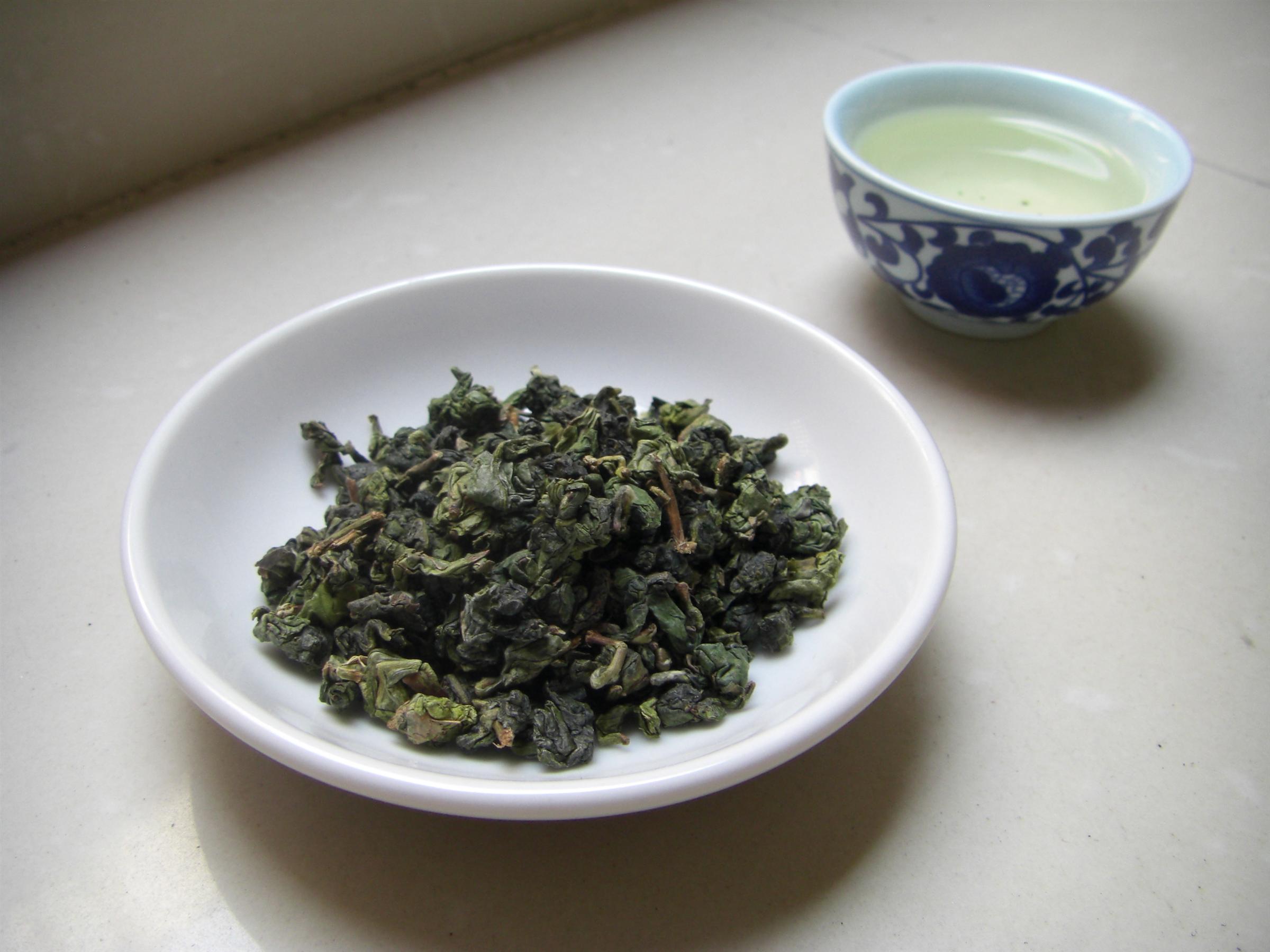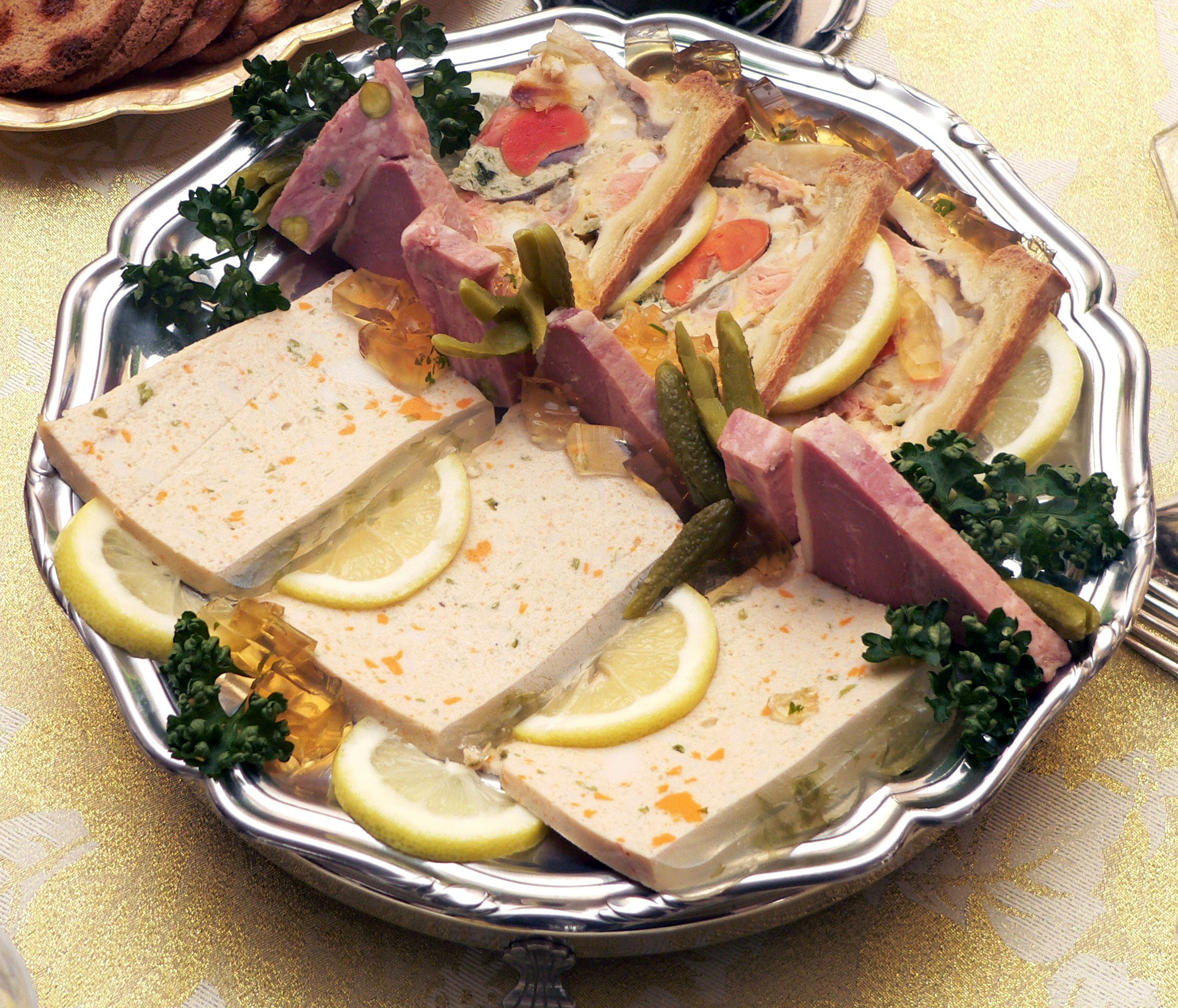|
Bak Kut Teh
''Bak kut teh'' (also spelt bah kut teh and abbreviated BKT; , Teochew Pe̍h-uē-jī: ''nêg8-gug4-dê5'') is a pork rib dish cooked in broth popularly served in Malaysia and Singapore where there is a predominant Hoklo and Teochew community. The name literally translates from the Hokkien dialect as "meat bone tea", and it usually consists of pork ribs simmered in a broth of herbs and spices (including star anise, cinnamon, cloves, ''dong quai'', fennel seeds and garlic) for hours. However, it can also be made with seafood, chicken and other meat. Despite its name, there is in fact no tea in the dish itself; the name refers to a strong oolong Chinese tea which is usually served alongside the soup in the belief that it dilutes or dissolves the copious amount of fat consumed in this dish. Additional ingredients may include offal, varieties of mushroom, choy sum, and pieces of dried tofu or fried tofu puffs. Additional Chinese herbs may include ''yu zhu'' (玉竹, rhizome ... [...More Info...] [...Related Items...] OR: [Wikipedia] [Google] [Baidu] |
Fujian
Fujian is a provinces of China, province in East China, southeastern China. Fujian is bordered by Zhejiang to the north, Jiangxi to the west, Guangdong to the south, and the Taiwan Strait to the east. Its capital is Fuzhou and its largest prefecture city by population is Quanzhou, with other notable cities including the port city of Xiamen and Zhangzhou. Fujian is located on the west coast of the Taiwan Strait as the closest province geographically and culturally to Taiwan; as a result of the Chinese Civil War, a small portion of historical Fujian is administered by Taiwan, romanized as Fuchien Province, Republic of China, Fuchien. While the population predominantly identifies as Han Chinese, Han, it is one of China's most culturally and linguistically diverse provinces. The dialects of the language group Min Chinese are most commonly spoken within the province, including the Fuzhou dialect and Eastern Min of Northeastern Fujian province and various Southern Min and Hokkien dial ... [...More Info...] [...Related Items...] OR: [Wikipedia] [Google] [Baidu] |
Teochew People
The Teochew (), Teo-Swa, or Chaoshanese are an ethnic group historically native to the Chaoshan region in south China who speak the Teochew language. Today, most ethnic Teochew people live throughout Chaoshan and Hong Kong, and also outside China in Southeast Asia, including in Singapore, Malaysia, Thailand, Indonesia, Cambodia, Vietnam, and the Philippines. The community can also be found in diasporas around the world, including the United States, Canada, Australia, New Zealand, and France. Names The ancestral homeland of the Teochew people is now known in China as Teo-Swa or Chaoshan (; Peng'im: ; ). This whole region was historically known as Teochew (; Peng'im: ; ), and this term continues to be used by the Teochew diaspora in Southeast Asia. In referring to themselves as Sinitic people, Teochew people generally use (), as opposed to (). Teochew people also commonly refer to each other as (). History The ancestors of the Teochew people moved to present-day Chaosha ... [...More Info...] [...Related Items...] OR: [Wikipedia] [Google] [Baidu] |
Gongfu Tea Ceremony
''Gongfu'' tea ( Teochew: gang1 hu1 dê5) or ''kung fu'' tea ( zh, c= or zh, c=, p=''both'' gōngfū chá, labels=no), literally "making tea with skill", is a traditional Chinese tea preparation method sometimes called a "tea ceremony". It is probably based on the tea preparation approaches originating in Fujian and the Chaoshan area of eastern Guangdong. The term Gongfu (工夫) in Chaoshan dialect means the technique is meticulous, subtle, graceful and exquisite as well as requiring patience and experience to perfect. The practice involves using smaller brewing vessels and a more potent leaf-to-water ratio than in Western-style brewing. Today, the approach is used popularly by teashops carrying tea of Chinese or Taiwanese origin, and by aficionados and trained masters as a way to fully realize the taste of a tea selection, especially a finer one. History Attention to tea-making quality has been a classic Chinese tradition. All teas, loose tea, coarse tea, and powdered te ... [...More Info...] [...Related Items...] OR: [Wikipedia] [Google] [Baidu] |
Tieguanyin
''Tieguanyin'' (; Standard Chinese pronunciation ) is a variety of Chinese oolong tea that originated in the 19th century in Anxi in Fujian province. Tieguanyin produced in different areas of Anxi have different gastronomic characteristics. Name The tea is named after the Chinese Goddess of Mercy Guanyin, Guanyin is an embodiment of Avalokiteśvara Bodhisattva. Other spellings and names include "Ti Kuan Yin", "Tit Kwun Yum", "Ti Kwan Yin", "Iron Buddha", "Iron Goddess Oolong", and "Tea of the Iron Bodhisattva". It is also known in its abbreviated form as "TGY". Legends There are two legends behind this tea: Wei and Wang. Wei legend In Fujian's Anxi County, there was a run-down temple which held an iron statue of Guanyin, the Bodhisattva of Compassion. Every day on the walk to his tea fields, a poor farmer named Wei would pass by and reflect on the temple's worsening condition. "Something has to be done," he thought. Being poor, Wei did not have the means to repair the ... [...More Info...] [...Related Items...] OR: [Wikipedia] [Google] [Baidu] |
Youtiao
''Youtiao'' (), known in Southern China as yu char kway, is a long golden-brown deep-fried strip of wheat flour dough of Chinese cuisine, Chinese origin and (by a variety of other names) also popular in other East Asia, East and Southeast Asian cuisines. Conventionally, ''youtiao'' are lightly salted and easily separated by hand. ''Youtiao'' are normally eaten at breakfast as an accompaniment for Congee, rice congee, doujiang, soy milk or cow's milk blended with sugar. ''Youtiao'' may also be known as a Chinese cruller, Chinese oil stick, Chinese donut [sticks], and fried breadstick, among others. In other Asian countries, they may also be called ''bicho, you char kway, cakwe, cakoi, kueh, kuay, shakoy'' or ''pathongko'', among other names. Culinary applications and variants At breakfast, ''youtiao'' can be stuffed inside ''shāobǐng'' () to make a sandwich known as ''shāobǐng yóutiáo'' (). Youtiao wrapped in a rice noodle roll is known as ''zháliǎng''. In Yunnan, a ro ... [...More Info...] [...Related Items...] OR: [Wikipedia] [Google] [Baidu] |
Fujian Cuisine
Fujian cuisine or Fujianese cuisine, also known as Min cuisine, is one of the native Chinese cuisines derived from the cooking style of China's Fujian Province, most notably from the provincial capital, Fuzhou. "Fujian cuisine" in this article refers to the cuisines of Min Chinese speaking people within Fujian. Other cuisines in Fujian include Putian cuisine, Hokkien cuisine, Hakka cuisine, and the ethnic minority cuisines of the She and Tanka people. Fujian cuisine is known to be light but flavourful, soft, and tender, with particular emphasis on umami taste, known in Chinese cooking as ''xianwei'' (), as well as retaining the original flavour of the main ingredients instead of masking them. Many diverse seafood and woodland delicacies are used, including a myriad variety of local fish, shellfish and turtles, or indigenous edible mushrooms and bamboo shoots, provided by the coastal and mountainous regions of Fujian. The most commonly employed cooking techniques in th ... [...More Info...] [...Related Items...] OR: [Wikipedia] [Google] [Baidu] |
Dark Soy Sauce
In Chinese cuisine, dark soy sauce () is a dark-coloured soy sauce used mainly for adding colour and flavour to dishes. It is richer, slightly thicker, and less salty than other types of soy sauce. As the Chinese name () suggests, it is also aged longer. It is often sweetened by adding molasses or other sweetening agents. Dark soy sauce is often used in stews, stir-fries, and sauce In cooking, a sauce is a liquid, cream, or semi- solid food, served on or used in preparing other foods. Most sauces are not normally consumed by themselves; they add flavour, texture, and visual appeal to a dish. ''Sauce'' is a French wor ...s. It is used in dishes requiring colours, such as red-cooked dishes. Name The Chinese word ( zh, 老抽), meaning "old extract", is shortened from the word (), meaning "old man extract". It contrasts with ( zh, 生抽) or "raw extract", usually referred to as "light soy sauce" in English sources. See also * Soup soy sauce * Sweet soy sauce ... [...More Info...] [...Related Items...] OR: [Wikipedia] [Google] [Baidu] |
Rhamnus (plant)
''Rhamnus'' is a genus of about 140 accepted species of shrubs or small trees, commonly known as buckthorns, in the family Rhamnaceae. Its species range from tall (rarely to ) and are native mainly in east Asia and North America, but found throughout the temperate and subtropical Northern Hemisphere, and also more locally in the subtropical Southern Hemisphere in parts of Africa and South America. One species, the common buckthorn (''Rhamnus cathartica''), is able to flourish as an invasive species, invasive plant in parts of Canada and the United States, where it has become naturalisation (biology), naturalized. Both deciduous and evergreen species occur. The leaves are simple, long, and arranged alternately, in opposite pairs, or almost paired (subopposite). One distinctive character of many buckthorns is the way the venation (botany), veination curves upward towards the tip of the leaf. The plant bears fruits which are black or red berry-like drupes. The name is due to the ... [...More Info...] [...Related Items...] OR: [Wikipedia] [Google] [Baidu] |
Polygonatum
''Polygonatum'' , also known as King Solomon's-seal or Solomon's seal, is a genus of flowering plants. In the APG III classification system, it is placed in the family Asparagaceae, subfamily Nolinoideae (formerly the family Ruscaceae). It has also been classified in the former family Convallariaceae and, like many lilioid monocots, was formerly classified in the lily family, Liliaceae. The genus is distributed throughout the temperate Northern Hemisphere. Most of the approximately 63 species occur in Asia, with 20 endemic to China.Wujisguleng, W., et al. (2012)Ethnobotanical review of food uses of ''Polygonatum'' (Convallariaceae) in China.''Acta Societatis Botanicorum Poloniae'' 81(4) 239-44. Etymology ''Polygonatum'' comes from the ancient Greek for "many knees", referring to the multiple jointed rhizome. One explanation for the derivation of the common name "Solomon's seal" is that the roots bear depressions which resemble royal seals. Another is that the cut roots res ... [...More Info...] [...Related Items...] OR: [Wikipedia] [Google] [Baidu] |
Tofu
or bean curd is a food prepared by Coagulation (milk), coagulating soy milk and then pressing the resulting curds into solid white blocks of varying softness: ''silken'', ''soft'', ''firm'', and ''extra (or super) firm''. It originated in China and has been consumed in the country for over 2,000 years. Tofu is a traditional component of many East Asian cuisine, East Asian and Southeast Asian cuisine, Southeast Asian cuisines; in modern Western cooking, it is often used as a Meat alternative, meat substitute. Nutritionally, tofu is low in calories, while containing a relatively large amount of protein. It is a high and reliable source of iron, and can have a high calcium or magnesium content depending on the Flocculation, coagulants (e.g. calcium chloride, calcium sulphate, magnesium sulphate) used in manufacturing. Cultivation of tofu, as a protein-rich food source, has one of the lowest needs for land use (1.3 m²/ 1000 kcal) and emits some of the lowest amount of greenhouse ... [...More Info...] [...Related Items...] OR: [Wikipedia] [Google] [Baidu] |
Chinese Cabbage
Chinese cabbage (''Brassica rapa'', subspecies ''pekinensis'' and ''chinensis'') is either of two cultivar groups of leaf vegetables often used in Chinese cuisine: the Pekinensis Group (napa cabbage) and the Chinensis Group (bok choy). These vegetables are both variant cultivars or subspecies of ''B. rapa'' and belong to the same genus as ''Brassica oleracea'', whose cultivars include Western staples such as cabbage, broccoli, and cauliflower. Both ''B. rapa'' cultivars have many variations in name, spelling, and scientific classification, especially bok choy cultivars. History The Chinese cabbage was principally grown in the Yangtze River Delta region, but the Ming dynasty naturalist Li Shizhen popularized it by bringing attention to its medicinal qualities. The variant cultivated in Zhejiang around the 14th century was brought north, and the northern harvest of napa cabbage soon exceeded the southern one. These were then exported back south along the Grand Canal to Hangzhou ... [...More Info...] [...Related Items...] OR: [Wikipedia] [Google] [Baidu] |
Offal
Offal (), also called variety meats, pluck or organ meats, is the internal organ (anatomy), organs of a butchered animal. Offal may also refer to the by-products of Milling (grinding), milled grains, such as corn or wheat. Some cultures strongly consider offal consumption to be taboo, while others use it as part of their everyday food, such as lunch meats, or, in many instances, as Delicacy, delicacies. Certain offal dishes—including ''foie gras'' and ''pâté''—are often regarded as gourmet food in the culinary arts. Others remain part of traditional regional cuisine and are consumed especially during holidays; some examples are sweetbread, Jewish chopped liver, Scottish haggis, U.S. chitterlings, and Mexican Menudo (soup), menudo. On the other hand, intestines are traditionally used as casing for sausages. Depending on the context, ''offal'' may refer only to those parts of an animal carcass discarded after butchering or skinning; offal not used directly for human or anim ... [...More Info...] [...Related Items...] OR: [Wikipedia] [Google] [Baidu] |







